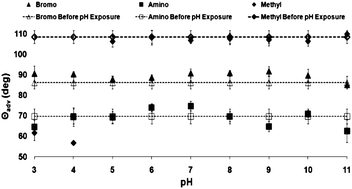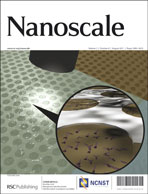Characterizing stability of “click” modified glass surfaces to common microfabrication conditions and aqueous electrolyte solutions†
Abstract
Microfluidic and nanofluidic systems are dominated by fluid–wall interactions due to enormous surface-area-to-volume ratios in these devices. Therefore, strategies to control wall properties in a reliable and repeatable manner can be important for device operation. Chemical modification of surfaces provides one such method. However, the stability of the surface adhered layers under fabrication and likely device operating conditions have not been evaluated in depth. This paper presents the stability analysis of three surface layers used in the ‘click’ chemistry methodology for surface modification. The three surface layers have


 Please wait while we load your content...
Please wait while we load your content...